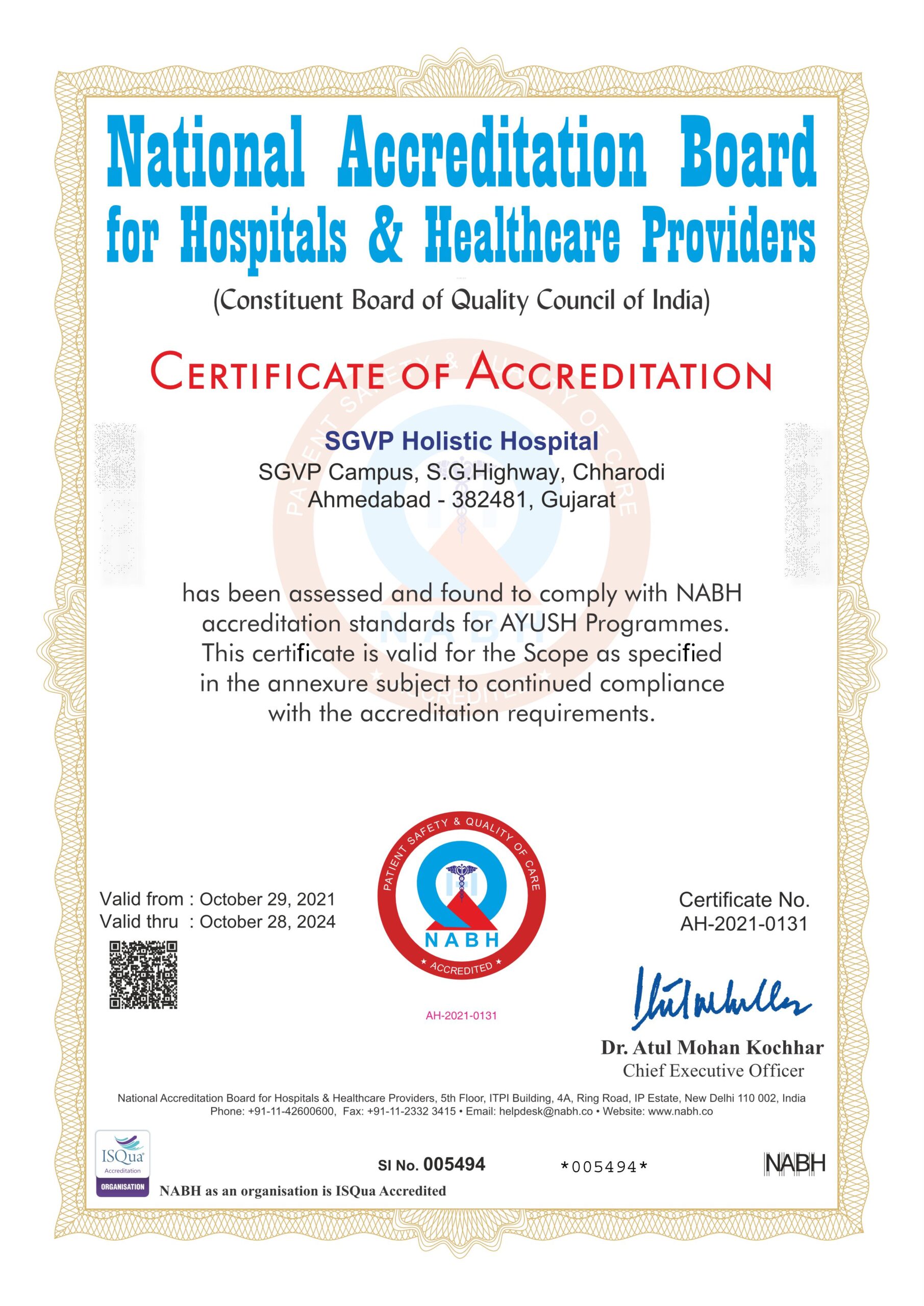-
Specialties
-
Association
Abhyanga
Abhyanga is a traditional Ayurvedic therapy that involves the application of warm herbal oils to the body through a soothing massage. This practice is designed to nourish the skin, enhance circulation, and promote relaxation. Abhyanga is particularly beneficial for balancing the doshas, relieving stress, and improving overall health. Regular sessions can lead to enhanced vitality, improved joint flexibility, and a sense of well-being. Consulting a qualified Ayurvedic practitioner ensures that the oils and techniques used are tailored to individual needs.









Listen directly from those we’ve helped at SGVP Ayurveda centre




Good Atmosphere
Good ayurveda treatment
Very supportive staff specially Dr Hitendra Gohil sir
I am extremely satisfied with the servieces of Ayurveda dept. SGVP hospital, I am satisfied with the staff of Ayurveda dept.
Best doctor Swapnil Modi
Vd Pravin Hirapara, I went to SGVP holistic hospital through a friends referal for Ayurvedic treatments at the 2nd floor with Ayurvedic Vd. Pravin Hirapara
The staff there were very welcoming, friendly and helpful. Cleanliness and sanitisation was at its best.
Amazing therapies and treatments done to support my health condition.
I am very thankful and grateful to everyone who helped me here.
Vd Pravin Hirapara is the best Ayurved doctor i have ever known.
I will refer definately refer to my friends.
Mara friend jaiminbhai thi mane Khabar Padi
Me vd swapnil modi pase thi panchkarm karayu .e treatment karaya pachi mane bahuj saru lagiyu
Ayurveda vibhag ma mane family jevu lagiyu
Ane ahi no staff pan bahu j saro che
Vd.swapnil modi best in Ayurveda
In sgvp holistic hospital
Hu bija ne pan recommend karish
Ty Ayurveda team
Here in the ritual of Pancha Karma the way Vaidha Pravin Sir Ayurveda explains something different noble thought in us. And when the ceremony starts with them, Vaidya Drashti Ma’am’s regular fellow’s understanding method is so good that it is as if during the whole ceremony he explains our every problem very well. They also do yoga classes and music and what about cleaning, the atmosphere is like Gokul Vrindavan Dham. This seems to be better than the hospital. Ahmedabad best Ayurveda Hospital 😊
Expert insights on the latest in healthcare







Reach us at
Reach us at
News & Media